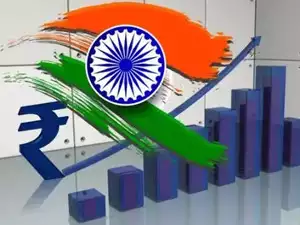In a bullish projection, global brokerage Jefferies anticipated India to claim the position of the third-largest economy by 2027, propelled by robust GDP growth, conducive geopolitics, and ongoing reforms.
Over the past decade, India’s GDP has surged at a compound annual growth rate (CAGR) of 7% in USD terms, reaching $3.6 trillion and ascending from the 8th to the 5th largest economy globally.
Forecasts suggested India’s GDP may breach the $5 trillion mark in the next four years, positioning it ahead of Japan and Germany to secure the third spot by 2027. The country’s demographics, institutional strength, and governance improvements are cited as key drivers of this growth.
While India currently boasts the world’s fifth-largest market capitalisation at $4.5 trillion, its representation in global indices remained modest at 1.6%. However, with increasing market free float and resolution of weight anomalies, India’s prominence in global indices is expected to rise. Jefferies envisions India’s market cap potentially nearing $10 trillion in the foreseeable future.
India’s vibrant democracy and consistent growth policies have fostered strong relationships with key global players, positioning it as a beneficiary of diversification strategies away from China. Favorable ties with Western nations, Japan, Australia, and the Middle East further bolster India’s geopolitical standing.
India’s entrepreneurial landscape has flourished, with a surge in unicorns and investment activity. The government’s focus on digital infrastructure, coupled with affordable data rates and a skilled workforce, has catalysed innovation and entrepreneurship, making India a global hub for startups.
The services export sector, valued at nearly $450 billion annually, underscored India’s pivotal role in the global economy. Additionally, the country’s strong corporate culture, characterised by a focus on return on equity (RoE) and robust institutional frameworks, enhances investor confidence and stability in the equity market.
Sustainable investment habits and a burgeoning domestic investor base are poised to sustain equity inflows of approximately $50 billion annually, potentially supporting elevated valuations and mitigating market volatility in the future.



